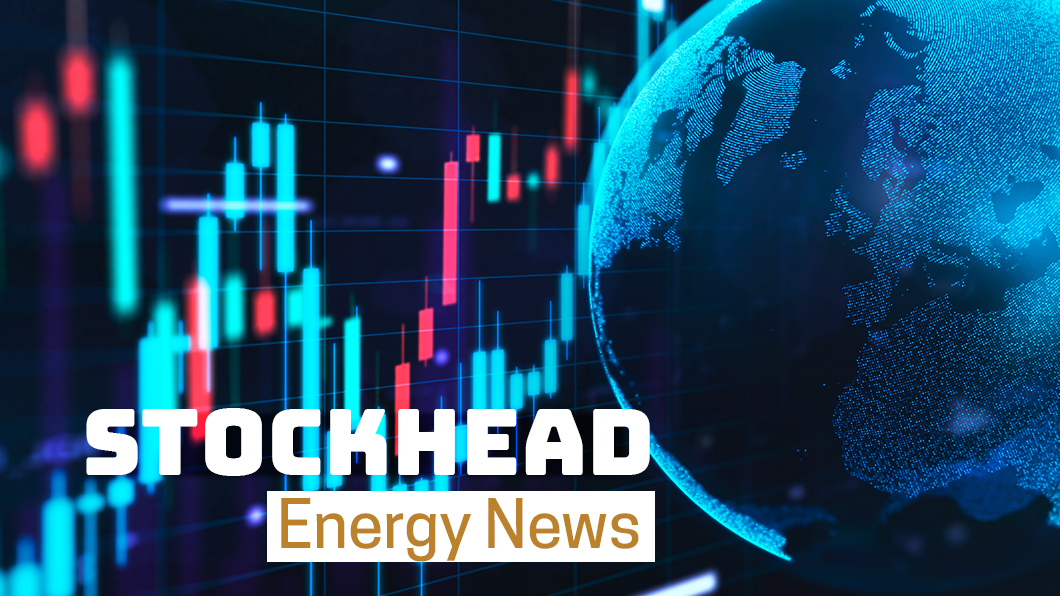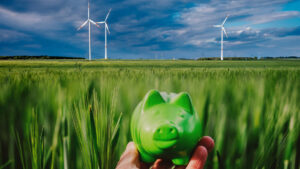Emission Control: BloombergNEF says a huge carbon charge may be needed to kickstart the hydrogen economy

Pic: Yuichiro Chino / Moment via Getty Images
Largely driven by where else but fast moving China, electrolyser shipments will double in 2021 and quadruple by the end of 2022.
There are a couple of types of this new-fangled technology, the polymer electrolyte membrane electrolysers currently favoured in Europe and the cheaper alkaline electrolysers currently being produced at rapid pace in the world’s largest developing economy.
They both do a similar thing, using electricity to split water into hydrogen and oxygen to produce H2, a clean burning gas that promises to replace fossil fuels in heavy industries like transport and steel making.
But there’s an issue. BloombergNEF says Chinese businesses itching to get ahead of the CCP’s decarbonisation targets are building capacity at pace, with the surprising rise of electrolyser construction in China likely to push the clean hydrogen industry beyond 2GW of capacity by 2022, nine times higher than 2020 levels.
But demand isn’t there yet, and BloombergNEF analysts predict in their 2H 2021 Hydrogen Market Outlook Report a carbon price of US$100/t may be needed by 2030 to wean economies off their reliance on oil and gas and incentivise the uptake of green hydrogen.
“What’s happening in China right now is revolutionary for clean hydrogen,” BloombergNEF lead hydrogen analyst Martin Tengler said.
“Chinese companies are racing to show their compliance with the country’s carbon neutrality target, pushing the market for electrolysers – the devices that produce hydrogen using water and electricity – to be at least nine times bigger in 2022 than in 2020.
“Still, hydrogen’s future as a major clean energy source is far from certain. Sustained, large-scale demand for clean hydrogen will need stronger demand-side incentives than what we are seeing now.”
Only Canada, the EU and the UK are projected to reach the US$100/t carbon price by 2030. Australia’s carbon price has risen around 30% to $22/t this year, but it’s a voluntary market, and the conversion of the price to a “tax” is a thorny political issue.
“We’ll need to see CO2 prices of at least $100 per ton by 2030 to incentivize hydrogen adoption,” Tengler said.
“No country has such carbon prices today, and we forecast only three markets to reach that level before 2030: Canada, the EU and the UK. It is no surprise then that the vast majority of announced large-scale demand-side clean hydrogen projects come from these regions.”
Will CCS hydrogen projects be dead in the water by 2030?
The controversial changes were long fought by the Greens and the Labor Opposition in the Senate, who suffered a tied vote on their disallowance motion after succeeding in halting a previous attempt to push the regulations through just weeks earlier.
Energy Minister Angus Taylor has pushed the Morrison Government’s line that it aims to pursue a “technology over taxes” mantra to push down emissions, though it continues to dotter over a concrete net zero commitment as the re-emergence of coal-loving Barnaby Joyce as the Nationals Leader threatens disharmony in the Coalition’s approach to climate change.
While it may be cheaper to produce hydrogen from gas now, even with CCS included, by 2030 BNEF predicts renewable hydrogen will be the cost leader in the industry.
“While it would be cheaper today to produce H2 from fossil fuels with CCS than via electrolysis using renewable electricity, the situation should reverse by 2030,” they noted in the report.
“We expect renewable H2 to be cheaper by 2030 in all 28 countries we modeled in our 1H 2021 Hydrogen Levelized Cost Update – even those with cheap gas, such as the US, and those with pricy renewable power, such as Japan and South Korea.
“This puts H2 + CCS projects with planned start dates near 2030 at risk of becoming uncompetitive against renewable H2. Even ‘gray’ hydrogen — today’s dominant form, made using fossil fuels without CCS — could cost more than green H2 by 2030 in 16 of the 28 countries modeled.
“We still expect H2 from fossil fuels with CCS to play a role in applications requiring a steady hydrogen supply or in locations with constrained access to renewable energy resources. Offsetting the 5-10% of CO2 not captured in the CCS process will be hard but necessary in markets aiming to achieve net-zero emissions.”
Most growth in electrolyser use in the Asia-Pacific region is coming from China, where the government plans to reach net zero emissions by 2060.
But BloombergNEF sees 125MW of green hydrogen capacity coming online in Australia in the coming years through Infinite Blue Energy’s Arrowsmith project in WA and The Hydrogen Utility in South Australia.
It has not factored in mega projects like the 50GW Western Renewable Energy Hub or Andrew Forrest’s green hydrogen and ammonia initiative through Fortescue Metals Group (ASX:FMG) along with a number of blue and green hydrogen projects being discussed by juniors across the country.
Public funding for H2 lower than for solar
About 40 countries around the world have a hydrogen strategy, including Australia, which aims to become a major exporter of the lightest element as coal and gas plants that consume Australian exports retire.
But just US$11.4 billion in annual government funding globally has been committed to supporting H2 projects, with as much as 44% coming from technology neutral funds where hydrogen proponents must compete with others for support.
Australia has $1.7 billion of funding available out to 2030, but the vast bulk of it is ‘technology neutral’ according to BloombergNEF.
Overall less than 0.1% of GDP has been committed among the 24 fastest moving nations towards hydrogen subsidies, below half of the level (0.2% of GDP) that was committed by EU states to solar PV in the 2000s.
With governments and major businesses in countries like Australia eyeing a $2/kg price level for hydrogen to be cost competitive with conventional energy sources like LNG and coal, BloombergNEF researchers say widespread demand for H2 is still some way off.
“Few countries have laid out clear plans to drive a broad base of demand,” they wrote. “That said, several large projects have been proposed for later in the decade and more may emerge soon in China.
“Plans to build significant H2 storage infrastructure in Europe will also enable large-scale demand in future.”
Demand is likely to come initially from blending into gas pipelines for domestic heating and then applications like transport, aluminium and steel refining.
The report authors noted that transport and storage was a challenge, with most hydrogen projects to be co-located with demand initially.
Plans to construct pipelines are becoming more prominent in Europe and plans to ship hydrogen, primarily as ammonia, are popular in the Asia-Pacific region and mainly Australia, which would have the space and renewable energy resources to export to technologically rich but resource poor nations like South Korea and Japan.
Vulcan Energy runs away from the pack
ASX green energy stocks
Scroll or swipe to reveal table. Click headings to sort.
| CODE | COMPANY | PRICE | 1 WEEK RETURN % | 1 MONTH RETURN % | 6 MONTH RETURN % | 1 YEAR RETURN % | MARKET CAP |
|---|---|---|---|---|---|---|---|
| VUL | Vulcan Energy | 11.57 | 30 | 45 | 29 | 2191 | $ 1,253,992,572.89 |
| AVL | Aust Vanadium Ltd | 0.024 | 0 | 26 | -8 | 129 | $ 76,210,129.16 |
| SKI | Spark Infrastructure | 2.685 | -2 | 19 | 22 | 19 | $ 4,738,376,556.00 |
| BSX | Blackstone Ltd | 0.405 | -7 | 11 | -11 | 17 | $ 136,051,197.90 |
| GNX | Genex Power Ltd | 0.23 | -2 | 7 | -6 | -7 | $ 251,426,510.58 |
| AST | AusNet Services Ltd | 1.85 | 2 | 5 | 7 | 3 | $ 7,047,134,654.24 |
| QEM | QEM Limited | 0.16 | -3 | 3 | 65 | 82 | $ 17,500,000.00 |
| PRL | Province Resources | 0.1475 | 5 | 2 | 676 | 596 | $ 163,256,922.60 |
| TLT | Tilt Renewables Ltd. | 7.53 | 0 | 1 | 24 | 121 | $ 2,837,559,146.52 |
| MEZ | Meridian Energy | 5.04 | 1 | 1 | -23 | 11 | $ 6,410,636,976.24 |
| NEW | NEW Energy Solar | 0.88 | 9 | 1 | -2 | -15 | $ 303,805,640.85 |
| IGE | Int Green Energy | 0.13 | 0 | 0 | 0 | 0 | $ 34,331,528.27 |
| PGY | Pilot Energy Ltd | 0.082 | 0 | 0 | 58 | 332 | $ 31,028,876.83 |
| FMG | Fortescue Metals Grp | 23.4 | -9 | -1 | 1 | 29 | $ 74,172,264,874.62 |
| IFT | Infratil Limited | 7.15 | 2 | -1 | 4 | 61 | $ 5,134,176,181.34 |
| MPR | Mpower Group Limited | 0.073 | 11 | -1 | 4 | 192 | $ 15,306,196.22 |
| DEL | Delorean Corporation | 0.205 | -2 | -5 | $ 37,606,438.80 | ||
| HZR | Hazer Group Limited | 0.835 | -1 | -7 | -51 | 120 | $ 125,714,603.73 |
| IRD | Iron Road Ltd | 0.23 | -4 | -8 | -28 | 209 | $ 186,185,630.80 |
| HXG | Hexagon Energy | 0.066 | -1 | -8 | -43 | 3 | $ 30,328,940.24 |
| GEV | Global Ene Ven Ltd | 0.0635 | 6 | -12 | -51 | 18 | $ 28,507,388.94 |
| LIO | Lion Energy Limited | 0.043 | 2 | -12 | 54 | 207 | $ 12,678,355.24 |
| PH2 | Pure Hydrogen Corp | 0.175 | -3 | -17 | -15 | 161 | $ 54,928,276.03 |
| RFX | Redflow Limited | 0.058 | 4 | -17 | 30 | 117 | $ 78,982,506.17 |
| ECT | Env Clean Tech Ltd. | 0.012 | 0 | -20 | 20 | 20 | $ 14,197,506.30 |
| PRM | Prominence Energy | 0.011 | 22 | -21 | -15 | 136 | $ 10,186,635.65 |
Vulcan Energy Resources (ASX:VUL) was a clear winner among the green energy sector this week, after its shares sky rocketed Wednesday on the release of a report that showed its Upper Rhine Valley lithium project would have a net outcome of taking 2.9Mt of CO2 out of the atmosphere over its lifetime.
According to Vulcan, the project will extract lithium from deep geothermal brines which will also generate electricity.
This non-emitting geothermal energy would power its own processes and be sold into the grid to displace coal from the German electricity network.
MPower Group (ASX:MPR) also posted steady gains after giving a status update in its quarterly report on its plan to open a series of 5MW build own operate renewable energy hubs across Australia’s east coast.
MPower shares rose yesterday after also announcing the appointment of well-known renewables advocate and consultant Amy Kean as a non-executive director.
Meanwhile the AGL-backed Powering Australian Renewables fund completed its takeover of Tilt Renewables’ Australian business to become the largest wind and solar power generation owner in the country.
Mercury NZ (ASX:MCY) will control Tilt’s Kiwi assets.
Related Topics

UNLOCK INSIGHTS
Discover the untold stories of emerging ASX stocks.
Daily news and expert analysis, it's free to subscribe.
By proceeding, you confirm you understand that we handle personal information in accordance with our Privacy Policy.








